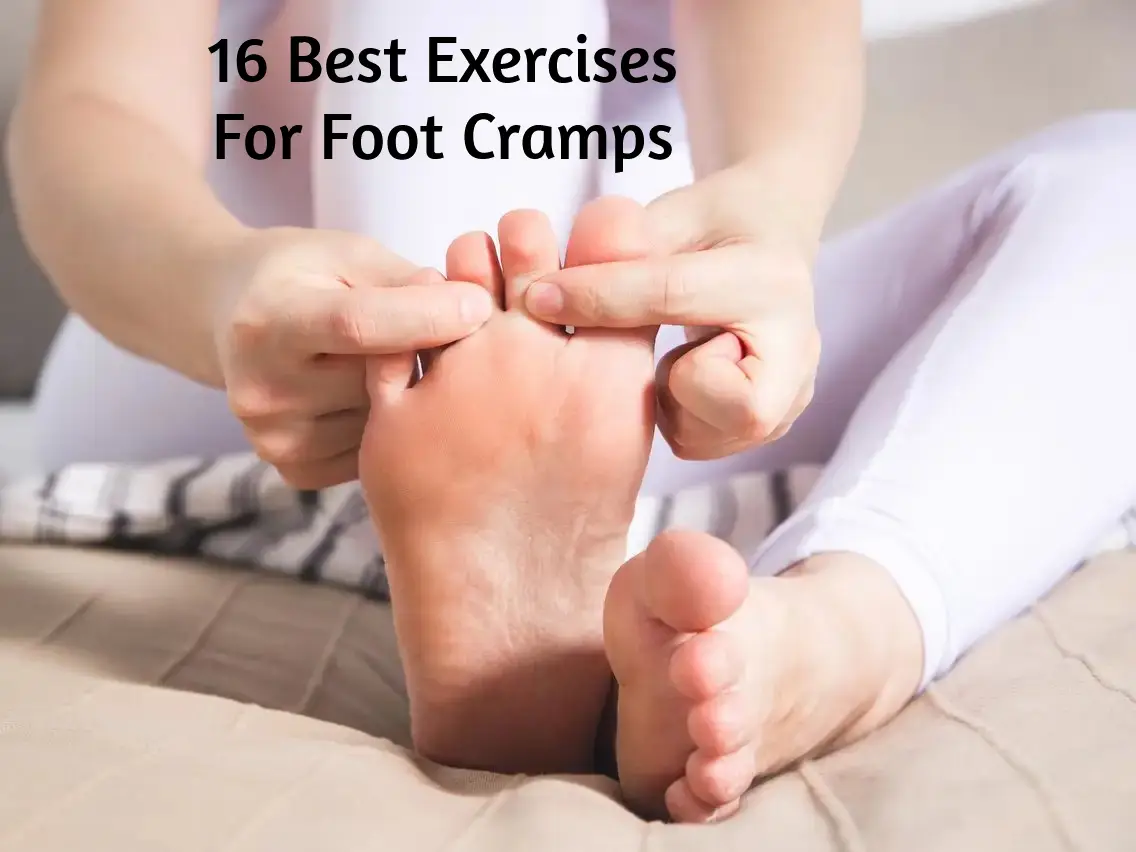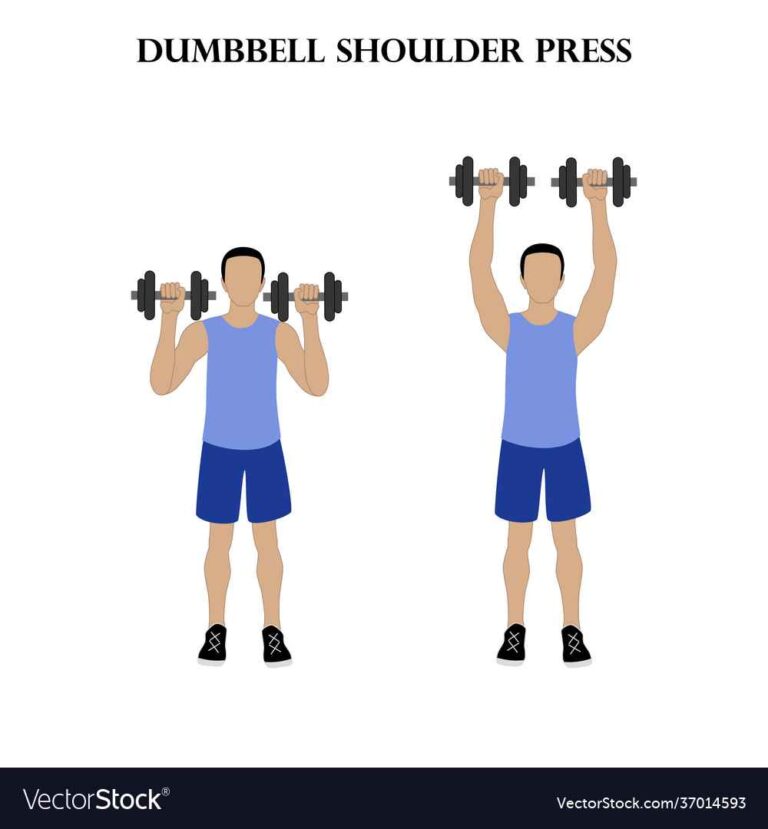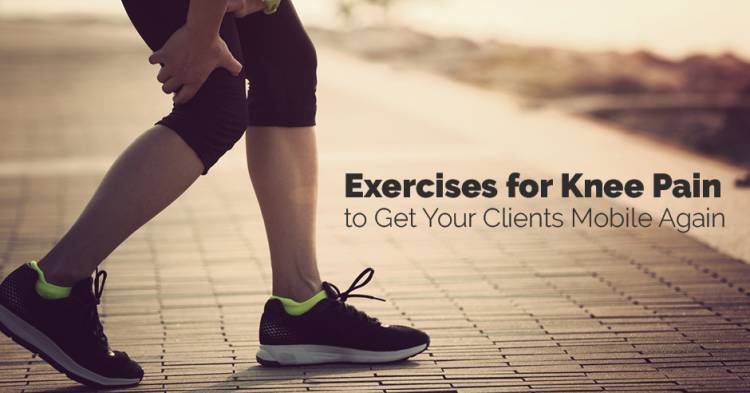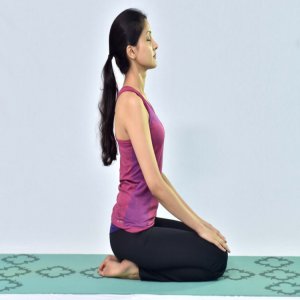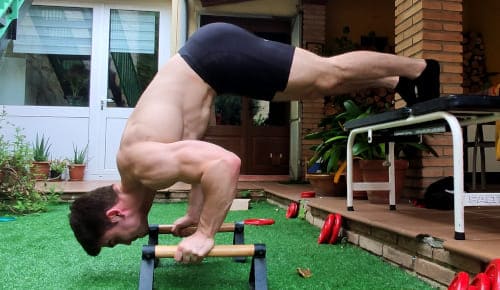16 Best Exercises For Foot Cramps
Introduction
Foot cramps can be a common and discomforting issue that many individuals experience at some point in their lives. While the exact causes of foot cramps can vary, they are often associated with factors such as dehydration, muscle fatigue, poor circulation, or certain medical conditions.
Fortunately, there are several exercises and lifestyle adjustments that can help alleviate foot cramps and reduce their frequency. In this guide, we will explore a range of exercises specifically designed to target the muscles in the feet and lower legs, promoting flexibility, strength, and improved circulation.
Incorporating these exercises into your routine may contribute to minimizing the occurrence of foot cramps and enhancing overall foot health.
Regaining movement and strength is crucial following any foot issue. This will help with tissue healing and allow you to get back to your regular activities.
Resuming your usual exercise regimen may require some time, and initial results may not be apparent right away. Nonetheless, following a foot issue, the ideal approach to achieve positive short- and long-term outcomes is a gradual return to regular activity.
You should pay attention to your level of pain when exercising, particularly in the beginning. It’s possible that these workouts initially make your symptoms a little worse. But with continued practice, they should become less difficult and even aid to enhance foot movement.
Which foot workouts are ideal for maintaining healthy feet?
- Exercises for the feet can strengthen and increase flexibility while also reducing the risk of foot or ankle pain. Stretching your Achilles tendon, big toe stretches, toe plays, and sand walking are a few possible exercises.
- To make sure that the muscles are offering the best support, it can be helpful to stretch and exercise the ankles and feet on a regular basis. In addition to improving foot range of motion, these exercises may help prolong an individual’s active life.
- The majority of foot workouts are easy to perform and don’t require any expensive equipment. They can be performed as part of a regular fitness regimen at home or in the gym.
16 Best Exercises For Foot Cramps
Following are the best exercises from which The feet can become more mobile and flexible with the help of the following exercises.
Toe raise, point, and curl
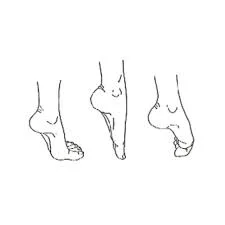
There are three stages to this exercise, which will strengthen every portion of the foot and toes.
Steps To Follow:
- Keeping your feet flat on the ground, sit up straight in a chair.
- Keep your toes on the ground, and raise your heels.
- When the soles of your feet are still on the ground, stop.
- After five seconds, hold this posture and then drop your heels.
- Toes should be pointed, heels should be raised, and just the tips of the big and second toes should touch the floor during the second stage.
- Hold down for five seconds, then release.
- In order to get just the tips of your toes touching the floor during the third stage, elevate your heels and curl them inward. Keep your posture for five seconds.
- Work on your flexibility and mobility by going through each step ten times.
Big toe stretch
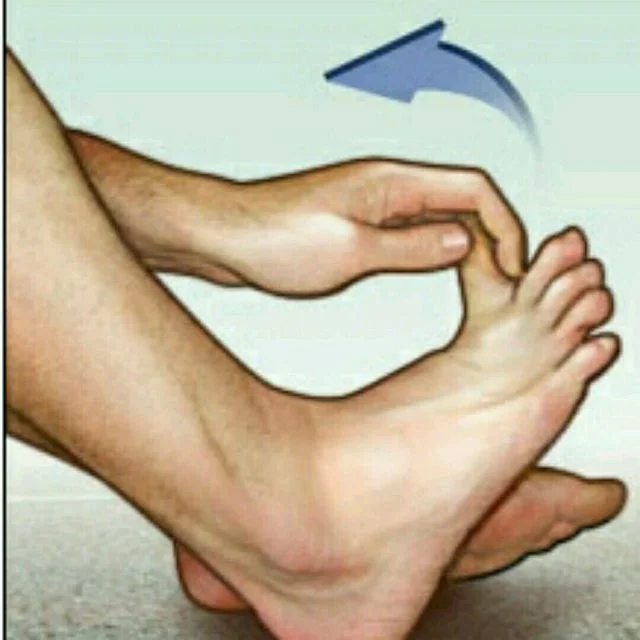
Preserving the complete range of motion of the big toe is essential. The next exercise, which similarly consists of three stages, is meant to stretch and ease toe pain caused by wearing tight shoes.
Steps To Follow:
- With your feet flat on the ground, take a straight seat in a chair.
- On top of the right leg, place the left foot.
- Using your fingers, gently extend the big toe upward, downward, and sideways.
- Hold each posture for five seconds with the big toe in place.
- Repeat this ten times before switching to the other foot.
Toe splay
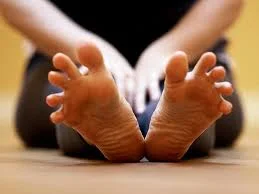
The toe splay exercise helps improve control over the toe muscles. People can do it alternately or simultaneously on both feet, depending on which foot is more comfortable.
Steps To Follow:
- With your feet softly resting on the floor, take a seat in a straight-backed chair.
- Spread your toes as far apart as you can without getting tired. Keep your posture for five seconds.
- Ten times over, repeat this motion.
- After gaining more strength, one can attempt wrapping a rubber band around their toes.
- This will give resistance, increasing the difficulty of the activity.
Toe curls
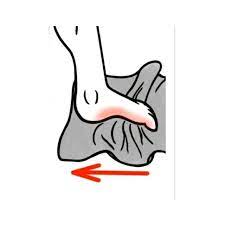
You may improve your overall strength by using toe curls to strengthen the flexor muscles in your feet and toes.
Steps To Follow:
- Keeping your feet flat on the ground, sit up straight in a chair.
- Place a little towel with its short side towards the feet on the ground in front of the torso.
- Position one foot’s toes on the towel’s short side. Attempt to draw the towel towards oneself by grabbing it between the toes.
- Do this exercise five times before moving on to the opposite foot.
- Consider using an object to weigh down the towel’s other end to increase the difficulty of this workout.
Marble pickup
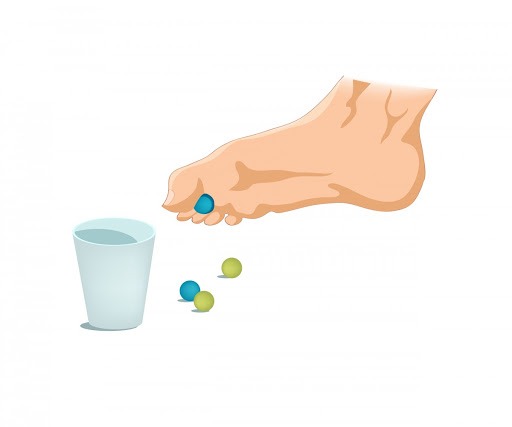
You may strengthen the muscles on the undersides of your foot and toes by performing the marble pickup exercise.
Steps To Follow:
- Keeping your feet flat on the ground, sit up straight in a chair.
- A bowl filled with twenty marbles and an empty bowl should be placed in front of the feet.
- Pick up each marble with just one foot’s toes and drop it into the empty basin.
- Apply the second foot to the same exercise once again.
Sand walking
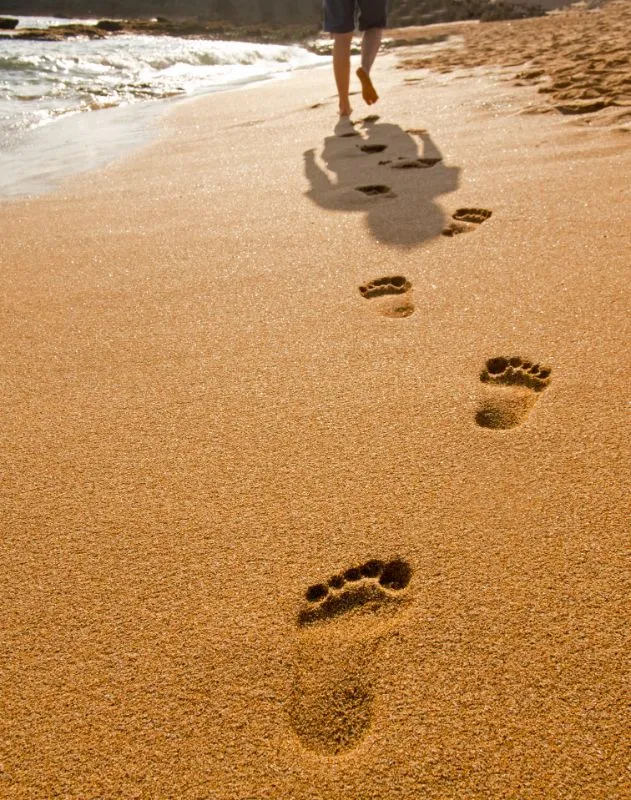
Barefoot walking on sandy ground is a great way to strengthen and stretch your calves and feet. Walking in the sand is more physically taxing due to its soft texture, which makes it an excellent exercise in general.
Steps To Follow:
- Go somewhere with sand—a beach, a desert, a volleyball court, whatever.
- Take off your socks and shoes.
- Take as long as you can to walk.
- To avoid overstretching your foot and calf muscles, try extending the distance very gradually.
Toe extension
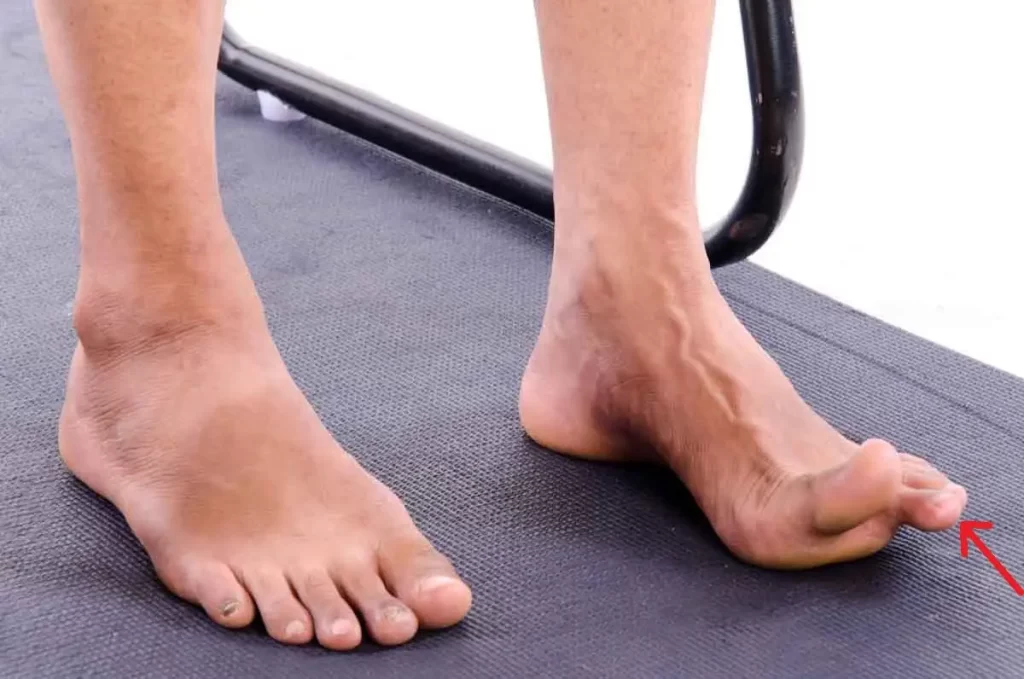
Plantar fasciitis is a condition that can be prevented or treated by toe extension therapy. It is characterized by heel discomfort and difficulties lifting the toes.
Steps To Follow:
- Keeping your feet flat on the ground, sit up straight in a chair.
- The right thigh should support the left foot.
- Bring your toes up to your ankle.
- The heel chord and the bottom of the foot should feel stretched out.
- For ten seconds, hold.
- Reducing discomfort and tension can be achieved by stretching and massaging the arch of the foot.
- On each foot, perform this exercise ten times.
Golf ball roll
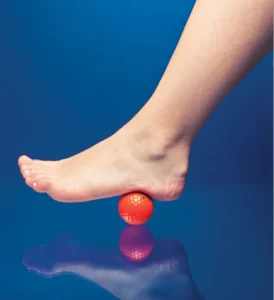
Plantar fasciitis pain and arch discomfort can both be lessened by rolling a golf ball beneath the foot.
Steps To Follow:
- Keeping your feet flat on the ground, sit up straight in a chair.
- Put a small, hard ball, like a golf ball, on the ground beside the feet.
- Roll the ball around with one foot on it and as much pressure as feels comfortable.
- The bottom of the foot should be massaged by the ball.
- Repeat with the other foot after two minutes.
- If there are no appropriate balls accessible, a frozen bottle of water can serve as a calming substitute.
Achilles stretch
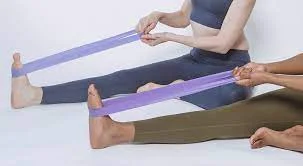
The tendon that connects the calf muscles to the heel is called the Achilles tendon. Though it can strain easily, maintaining its strength may aid with pain in the legs, ankles, or feet.
Steps To Follow:
- Lift your arms up so that your palms are flat against the wall as you face it.
- Reposition one foot while maintaining a straight knee. Next, bend the leg on the other side.
- Maintain both heels flat on the ground.
- Till the calf muscles and Achilles tendon feel stretched, push the hips forward.
- After 30 seconds of holding, switch sides. On each side, repeat three times.
- You can also press your hips forward and bend your back knee for a little different stretch.
Toe Spread and Press
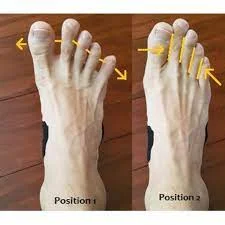
Running is frequently associated with plantar fasciitis, a condition characterized by pain and inflammation of the tissue that crosses the bottom of the foot. Toe spread and press is the arch-strengthening exercise that Loberg recommends for treating this issue.
Steps To Follow:
- Place your feet hip-width apart as you stand.
- Spread your toes apart as widely as you can.
- Hold until you start to feel a little tired.
- Then, without allowing any part of your foot to lift, press the ball of your big toe down while keeping your toes spread out on the ground.
- After a run, perform ten repetitions three times a week.
Standing Calf Raise
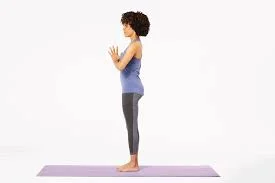
The big toe serves as the main point of push-off for runners, but many of them have a restricted range of motion in this area, which can lead to foot pain and cramps. Performing a calf raise with an emphasis on the big toe.
Steps To Follow:
- Ensure that your feet are shoulder-width apart.
- Finish by lifting onto the big toe after raising the heels.
- Throughout the motion, maintain the ball of each foot on the ground.
- Before each run, work up to 4 or 5 sets of 20 reps.
Write the Alphabet
He suggests using your big toe to write the alphabet in order to improve ankle and big toe mobility. This exercise will help relieve the stress in the muscles and tendons on the top of the foot caused by tight shoelaces and shoes that force the toes to flex unnaturally.
Steps To Follow:
- Take a comfortable seat or stand.
- Elevate your foot a few inches and use your big toe to write the alphabet in the air, starting with the capital letters. Make long, downward strokes. Write lowercase letters after you’ve completed the alphabet.
- Apply the same motion with the other foot.
- Throughout the day, perform at intervals.
The Asterisk
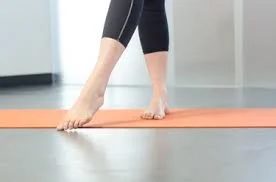
The heel, big toe ball, and tiny toe ball are all strengthened by this exercise. Additionally, it enhances ankle mobility when bearing full body weight, exerting an ankle strain akin to that of jogging.
Steps To Follow:
- Putting your weight on your right leg, take a tall stance.
- Tap the floor in front of your left toe while pointing your right toe.
- Go back to the beginning and tap right in front of you.
- Continue rotating anticlockwise.
- Finally, tap the pointing foot across and behind the opposing foot.
- Proceed in a clockwise manner on the left side.
Bent-Knee Heel Raises
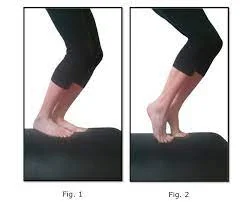
Bent-knee heel rises help the Achilles tendon become stronger and more resilient to the force of your foot hitting the ground.
Steps To Follow:
- Place your heels hanging over the side of a bench or box.
- Put your hands on the wall in front of you to help you stay steady.
- Put your left leg under your weight. After lowering the left heel towards the floor, press up to lift it above the bench or box’s height.
- Maintain a bent leg at all times.
- Continue with your right leg.
- Three times a week, do two sets of fifteen reps for each leg.
Band Ankle Strengthening
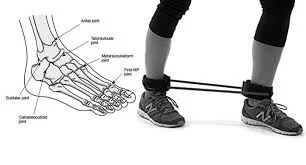
You must improve your range of motion and strengthen the ankle joint to avoid ankle problems. Both goals are achieved by banded ankle strengthening, which ensures that your ankle will be sturdy enough to withstand the force if you slip or are caught off balance while running.
Steps To Follow:
- A resistance band should be held behind your left ankle.
- As shown, loop the right portion of the band under the arch and back across the foot, then wrap it around the left side of the arch and over the foot.
- Grasp the resistance band’s ends at the inner of your leg.
- To strengthen her ankles, a woman encircles her left foot and ankle with a resistance band.
- According to Loberg, bent-knee heel lifts teach the Achilles tendon to endure the force of your foot hitting the ground by strengthening the collagen in that area.
- To generate tension, extend your leg straight.
- Maintain a straight left foot and turn it to the side.
- All during the exercise, keep the band intact.
- Change feet as soon as your foot starts to feel tired.
- Carry out the workout all day long.
Multi-Directional Hops with a Single-Leg
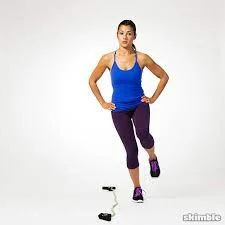
Your body will adjust to a weak hip by putting more force on your foot and ankle with each stride, which raises the possibility of injury. Hops on one leg improve hip strength and coordination between the foot, ankle, and hip.
Steps To Follow:
- Take a left-leg stance.
- Leap forward, bending your knee to land gently.
- Go back to the beginning and continue the motion in various directions, rotating counter-clockwise till six o’clock.
- Before going on to the right leg and repeating the movement clockwise, perform the left leg five times.
- Three times a week, perform three sets of each side.
Stretching exercises
- Maintaining a position over an extended amount of time is the goal of a stretch. This may eventually assist in increasing your range of motion.
- You should get a mild stretch during the activity. This shouldn’t hurt or feel awkward.
- If at all possible, you should aim to hold stretches for 20 to 30 seconds.
- Try to concentrate on performing workout sets. Do two or three sets of stretches, for instance. Do this two or three times a day, ideally.
- Your range of motion should increase as you stretch more, enabling you to stretch farther.
Foot safety and health advice
To keep the feet strong and in good condition:
- Exercise only after completing a complete warm-up program.
- Wear supportive footwear when engaging in daily activities and sports.
- Replace scuffed shoes as soon as you can.
- Increase your strength and flexibility gradually to condition the ankles and feet.
- Avoid uneven ground, especially if you’re jogging. Avoid running uphill too much.
- Pay attention to your body. Try not to overdo things.
- Rest and seek the necessary medical attention to avoid any injury recurrence.
How to figure out if the amount of exercise you’re doing is right for you
With the help of this guide, you may assess if you’re exercising at a suitable level. It will also help you figure out how much pain or discomfort is appropriate.
It can be helpful to rate your pain on a scale of 0 to 10, where 10 is the worst anguish you have ever felt. For instance:
- indicates little pain:0 to 3
- Pain acceptable limit: 4 to 5.
- severe discomfort:6 to 10
Discomfort when exercising
Try to keep the scale of your suffering between 0 and 5. If your pain exceeds this threshold, you can modify the exercises by:
- Reducing the frequency of an exercise regimen
- Lowering a movement’s speed
- Lengthening the intervals between movements for rest
How Much and How Frequently
To relieve your foot discomfort, you should progressively incorporate activities into your routine.
You can choose to perform each exercise in sequence or to begin with just one or two and work your way up to more as you feel more at ease.
Exercises for mobility and strength
- How often you do a single movement is called a repetition. It can be beneficial to begin new workouts by performing two to three repetitions at a time.
- Smaller tasks spread out throughout the day are preferable. Practice your repetitions, for instance, once an hour.
- Every few days, as this gets easier and if you feel like it, increase the number of repetitions you do by one or two.
It can be useful to divide the exercises into sets as you gain the ability to perform more repetitions. This implies that although you won’t execute them as frequently over the day, you could perform more repetitions at once. As an illustration:
- Perform eight sets.
- Take a moment to relax.
- Perform eight more repetitions in a new set.
- Do this two or three times every day.
You might attempt to increase the number of repetitions you perform over time. You can strengthen the tendons and muscles by performing these actions repeatedly. Aim for no more than two sets of fifteen.
When to Give Up
- If these exercises worsen your symptoms or create new pain, stop doing them.
- Talking to a healthcare provider about your symptoms is a good option if your knee pain gets worse while you follow this advice.
Conclusion
It is a good idea to maintain healthy ankles and feet. By performing the aforementioned exercises, you can lessen the chance of injury, avoid discomfort, and calm current pain.
Exercise may be helpful for those who have a diagnosed foot disease, such as plantar fasciitis or an Achilles tendon injury. If at all possible, get medical advice before beginning a new stretching and exercise regimen.
FAQs
How may a cramp in the foot be relieved?
Flex your foot and apply pressure to your big toe to release the cramp. Stretch your foot gently but firmly. Leg and foot cramps may also be eased by moving around and kicking your legs. Any residual soreness may be reduced by applying ice, having a warm bath or shower, or both.
How can you avoid getting foot cramps when working out?
Before beginning any exercise, properly warm up and stretch. After working out, stretch to prevent your warmed-up muscles from shortening and cramping. When exercising, maintain proper posture. Water is important to consume before, during, and after physical activity.
Which workout works best for cramping in the feet?
Pain management exercises
With your feet flat on the ground, take a straight seat in a chair.
The right thigh should support the left foot.
Bring your toes up to your ankle. The heel chord and the bottom of the foot should feel stretched out.
For ten seconds, hold.
On each foot, perform this exercise ten times.
What is the duration of foot cramps?
The majority of cramps only last a few minutes, but you can assist your muscles to disengage by using a few easy cures. Both heat and massage work well as muscle relaxants because they promote blood flow, which in turn activates your body’s natural mechanism for releasing waste and distributing nutrients.
What causes cramping in the feet?
Foot cramps can be brought on by wearing shoes that are excessively tight or by exerting yourself too much. However certain medical disorders can also cause foot cramps. The painful, uncomfortable spasming of your foot muscles is what causes foot cramps.
References
- Exercises for foot problems | NHS inform. (2023, December 1). NHS Inform. https://www.nhsinform.scot/illnesses-and-conditions/muscle-bone-and-joints/exercises/exercises-for-foot-problems/
- Cadman, B. (2023, December 21). Best stretches and exercises for healthy feet. https://www.medicalnewstoday.com/articles/320964#summary
- Schultz, W. (2023, November 1). 7 easy exercises to stop foot pain. HealthPartners Blog. https://www.healthpartners.com/blog/stop-foot-pain-seven-easy-exercises/

